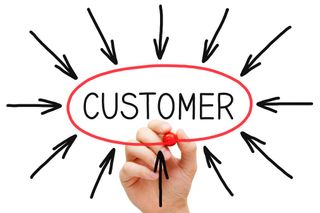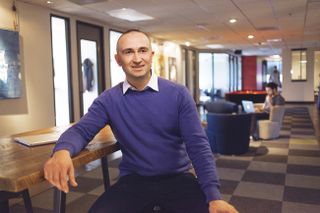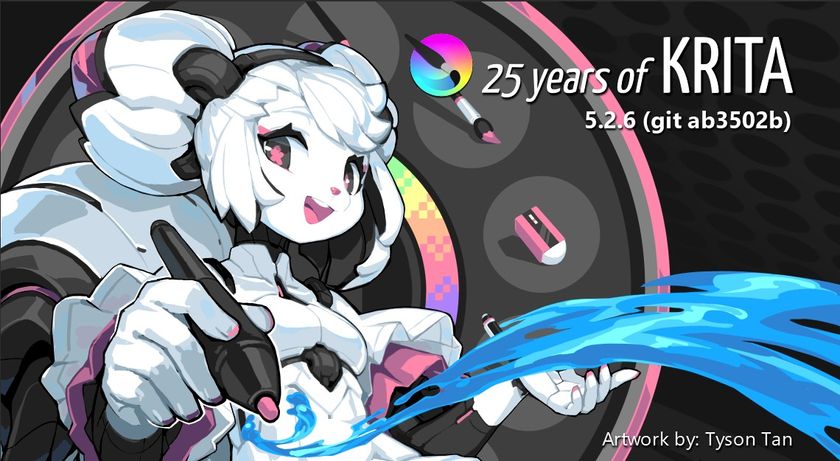How to be truly customer-centric
Andrew Turrell, VP of customer experience strategy at RED Interactive Agency, on how to really put the customer first.
Santa Monica-based agency RED describes itself as a "modern agency that focuses on the customer experience." Working with big brands including Netflix, GoPro, Riot Games and more, the team takes a holistic look at customer needs and expectations in order to design better solutions.
Andrew Turrell, VP of customer experience strategy, shares how this holistic customer experience works.
CX vs UX
Creative Bloq: Why consider the holistic customer experience, as opposed to conventional UX?
Andrew Turrell: The main distinction between UX and CX is that UX focuses mainly on a single property like a website or app, while CX focuses on the holistic brand ecosystem.
These disciplines are closely tied and share many similarities – both map the full landscape (site map for UX, ecosystem map for CX) and the paths people take (user flows for UX and customer journeys for CX), and both have research and customer insights driving their thinking.
With the current landscape, a more holistic customer perspective is essential for brands. People’s experiences with brands are increasingly integrated (physical with digital, content with social, etc) and cross-platform, so our thinking needs to align with that.
At the same time, customers’ expectations are so high that one bad experience can ruin their perception of a brand. For example, maybe a retailer has an awesome app, but the brick and mortar store experience is poor, with pushy salespeople and a poor atmosphere. It doesn’t matter how great this app is, it’s not going to make up for the other experiences. Research findings tell the story: 89% of customers will start doing business with a competitor after a negative service experience with a brand (CustomerThink).
Customer-focused brands

What successful customer experiences have you come across recently?
An example that comes to mind is Tesla's car buying process. We’ve done extensive research with car buyers, and I can’t overstate how much the dealership experience is despised, and how much that experience degrades brand perception. The fact that Tesla is bypassing this step in the buying process eliminates car buyers’ biggest pain point.
As another example, time and again, I’ve seen that what people want on digital is speed and efficiency, and the Amazon shopping experience is miles ahead of any other retailer.
Finally, I feel the New York Times has made the most of the cross-platform nature of digital usage. It has a great email strategy and push notifications through the app drive a ton of traffic. In fact, whenever The New York Times breaks a big story, within 24 hours, up to 60 per cent of all global traffic to that story can typically come via push notifications (Digiday). In general, it enables customers to truly tailor their experience.
Start with the customer
What’s the first step in creating a customer-centric experience?
At RED, we believe that the best experiences are driven by customer insights, and that’s how we approach solving problems. So the first step is communicating this perspective as soon as we begin working with a client, during the pitch phase or in our immersion workshop. This sets the tone for the project and before long, gets the client speaking the same language and thinking the same way.
What do your immersion workshops involve?
We always kick off a project with a day-long immersion workshop, and have found it has dramatic benefits over other ways of kicking off projects.
Preparation before the workshop is critical to get the most out of the day. Prior to the workshop, we send out an online survey to as many stakeholders as we can, have a phone interview with the key stakeholder, and review any past research or analytics the client has done. We’ll also often do social listening and a bit of our own research, just so we come in informed about their business and customers, and can use the time to dig deeper.
The workshop itself is split up into activities, and the agenda is always different depending on the client and the type of project. Generally, the activities tend to cover high-level topics like goals and customers, and we always mix up the day with group work and different activity formats.
Convince clients of customer-first approach

How do you sell your customer-centric ideas to clients?
At the very beginning of the project, decisions are made that influence the final customer experience, from incorporating testing into a schedule to setting research budgets. To influence those decisions you need to build trust with the client early on. The immersion workshop is a great way to do this, so express informed opinions and show that you’re looking out for the client’s best interest.
As the project proceeds, once you’ve developed a strategy based on research and customer insights, getting buy-in at that point is all about empathy. Have your clients observe research with you and then present findings to them in a way that resonates at a human level, and they’ll be more likely to be aligned with what you’re presenting.
As for getting approved designs, if you present a design in the context of that strategy, and focus on how it addresses customers’ needs, the conversation is likely to stay on that level, and is less likely to delve into subjective, nit-picky feedback. Our team has been developing a process for this for years at RED.
What are the main challenges in creating a customer-centric experience?
Being customer-centred is hard, and the steps to achieve it are time-consuming and add friction to any project.
The strategy, design and development process has decision points and trade-offs at every turn, and our clients or colleagues tend to prioritise other goals, reducing how aligned the final product is with customers’ needs.
For instance, if given the choice between spending a week of the schedule doing user testing or building features, we’ll often take the features. Similarly, hitting short-term business goals is preferred even if it means sacrificing usability (more ads per page, for instance).
Another challenge is that the customer-centric process is naturally ambiguous and unpredictable. We have to listen to the opinions of customers – opinions that may be in conflict with our instincts. The lack of control can be unsettling and can tempt the team to drift back to more comfortable ways of working.
Liked this? Read these:

Thank you for reading 5 articles this month* Join now for unlimited access
Enjoy your first month for just £1 / $1 / €1
*Read 5 free articles per month without a subscription

Join now for unlimited access
Try first month for just £1 / $1 / €1
Get the Creative Bloq Newsletter
Daily design news, reviews, how-tos and more, as picked by the editors.
Oliver is an independent editor, content consultant and founder of Pixel Pioneers. Formerly the editor of net magazine, he has been involved with the web design and development industry for more than a decade and helps businesses across the world create content that connects with their customers. He is passionate about content, user experience, accessibility and designing for social good.












